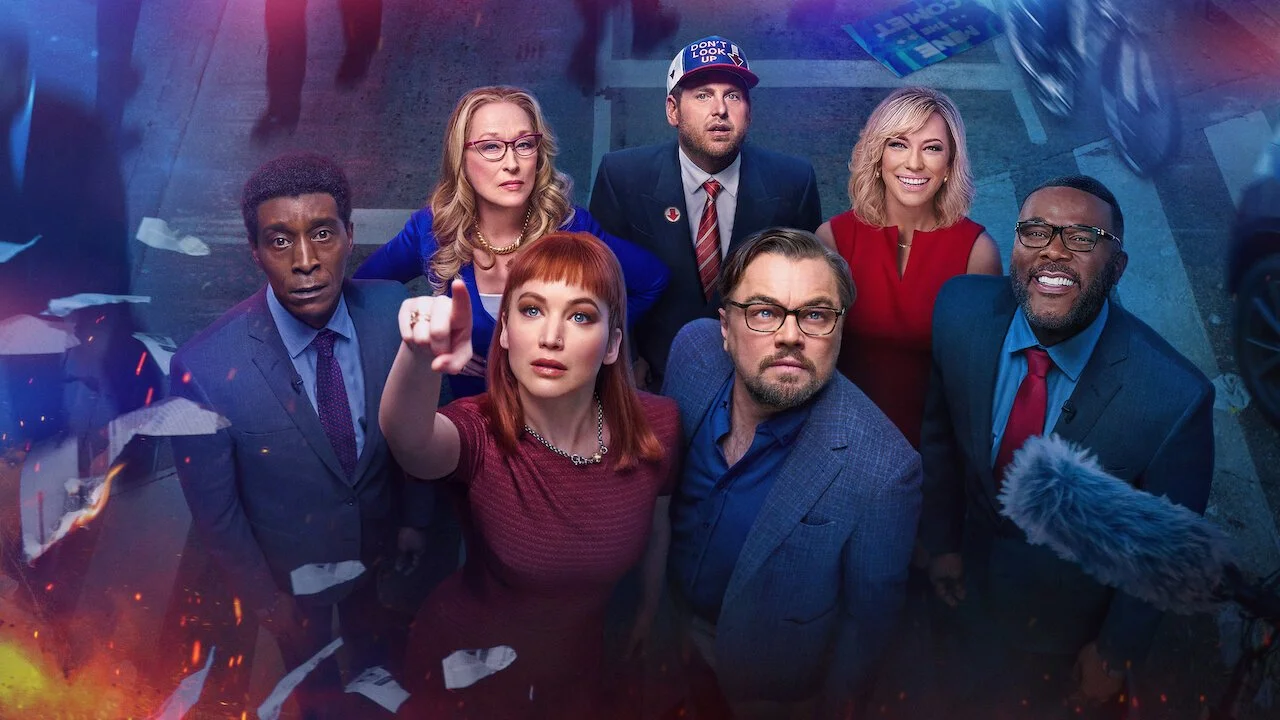Building Off The “Don’t Look Up” Buzz: 4 Tips For Taking Action
Image Credit: Netflix
Netflix’s recent film Don’t Look Up is a classic disaster flick with a satirical twist — the comet rapidly approaching Earth was written as a metaphor for climate change.
That’s made the record-breaking film particularly resonant for those of us actually working/living/breathing in this space. And it’s why we felt compelled to bring together our community of impact practitioners earlier this week for a Community Conversation analyzing the movie, exploring how it was received and brainstorming how we can build off the conversations that the film has ignited.
The Zoom call brought together viewers from all corners of the globe, who contributed a range of perspectives. Many agreed with Neil deGrasse Tyson’s comment that the movie felt more like a documentary than a satire. Some found the viewing experience cathartic, while others felt wound up watching their life’s work play out on screen. The spot-on depiction of America’s media and political culture felt bitingly hilarious to some, while others questioned what exactly is so funny about a crisis that will ultimately be felt so much harder in other parts of the world.
The conversation culminated in a brainstorm on ways to take the momentum from the film forward, and we've summed up four takeaways for sustainability change agents looking to build off the Don’t Look Up buzz. Because as filmmaker Adam McKay said in a Guardian op-ed, “We can’t just sit back and watch what’s happening to the planet. We are not an audience. Like it or not, we are in this story.”
1. Use the film as an entry-point to conversations with friends, family and colleagues who may not be used to talking about climate change.
McKay says that he wrote Don’t Look Up as a way to address climate change in a new way that might speak to different types of people. “Don’t Look Up tries to do something that perhaps doesn’t feel natural with a story as dark as climate change: make the audience laugh,” he wrote. “Because when people laugh together it gives them perspective, relief and, most of all, a semblance of community. This is not conjecture. Research shows that humor can lower our defenses and make hard truths easier to hear.” This approach resonated with many of the people on the call, who said the movie allowed them to have deeper conversations with people they otherwise wouldn’t talk about sustainability with. If you don’t know where to begin, we appreciated this conversation guide created by Netflix with film-related conversation-starters.
2. Tailor your approach to your audience, especially if you’re working in a global setting.
Viewers’ reactions to the film weren’t just influenced by their experience in sustainability, but also by their cultural context. For practitioners in the U.S., DLU’s satirical representation of America’s media and political culture felt spot on. But for others, the film enhanced the frustration that many feel with the U.S.’s role in the climate fight — like, why is it only up to the U.S. to stop the comet? What is the role of other countries? And is it appropriate for an American filmmaker to be making a comedy about climate change given the U.S.’s lackluster commitments? This divergence in reactions demonstrates the need to approach conversations about the film with a spirit of curiosity, recognizing that people are viewing the film from many different perspectives.
3. Be clear-eyed and honest about the reality — but pair that honesty with ways to take action.
One of the film’s stand-out scenes is when the scientists are first invited to share their findings on a “Morning Joe”-style news show. Their warnings are quickly laughed off by the hosts, who try to keep the conversation light and positive. The scene highlighted a tension for many practitioners on the call — how can we talk about scary things like climate change when studies show that people avoid news that provokes feelings of fear and guilt? How do we balance the sense of urgency with what feels like the need for a positive spin? One CSR leader shared that her approach is to be honest and direct about the situation, but that she always follows up those messages with simple but substantive actions that her audience can take. We liked the ideas in this action platform created by Netflix and Count Us In, which includes resources for sparking change at work, switching to clean energy and more. Other important actions include voting for political leaders with expertise in climate change and starting small with your own consumption habits (while also holding your favorite brands to account).
4. Look up — but don’t lose hope.
“We’re at the point in the movie where we can turn the comet around,” said one of the participants. And we all have a role to play. We love this simple yet helpful Venn diagram shared by Dr. Ayana Elizabeth Johnson which can help you identify where you can fit in. Coming together in community with other climate change agents is also important for keeping the momentum going, participants agreed, and shared The Church of Climate Change and The Work that Reconnects Network as two strong resources.
We’re also excited to continue bringing people together around topics that matter to our community of CSR, sustainability and social impact practitioners — join our biweekly newsletter to get notified of the next one.

